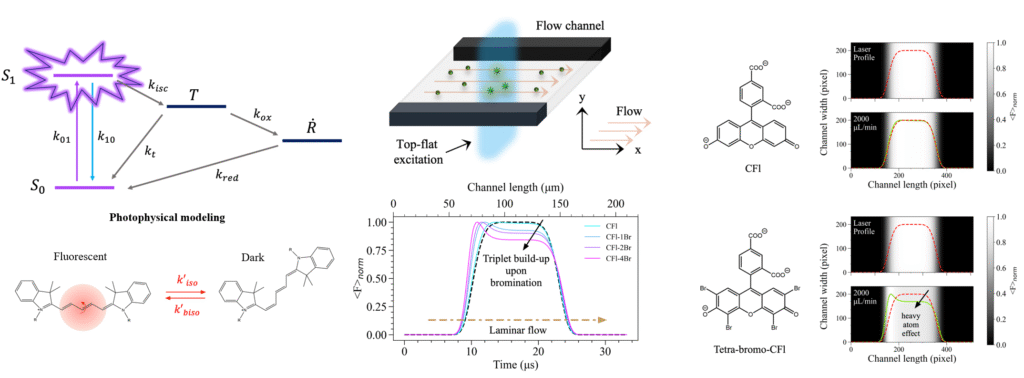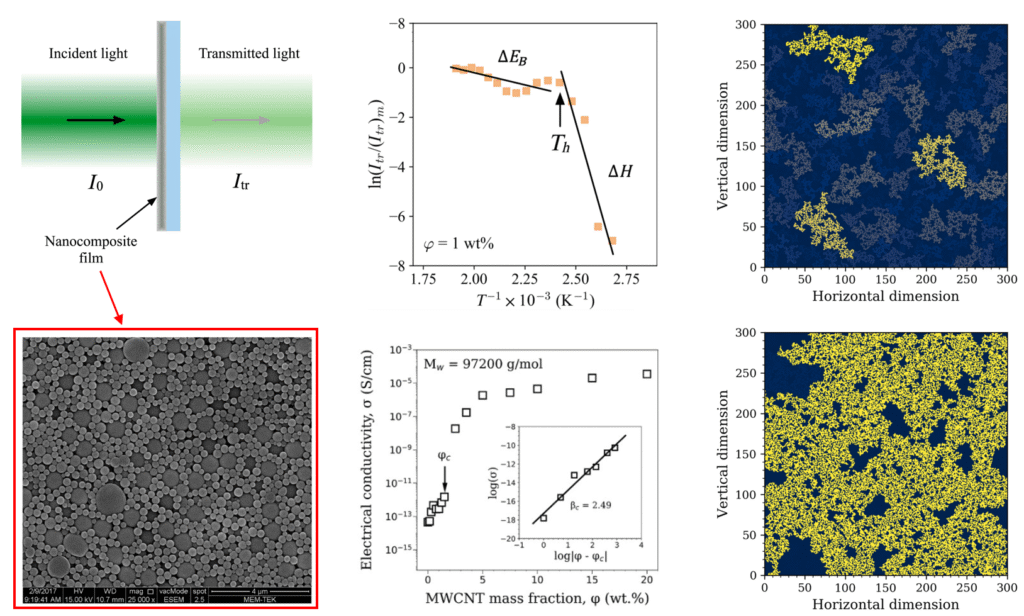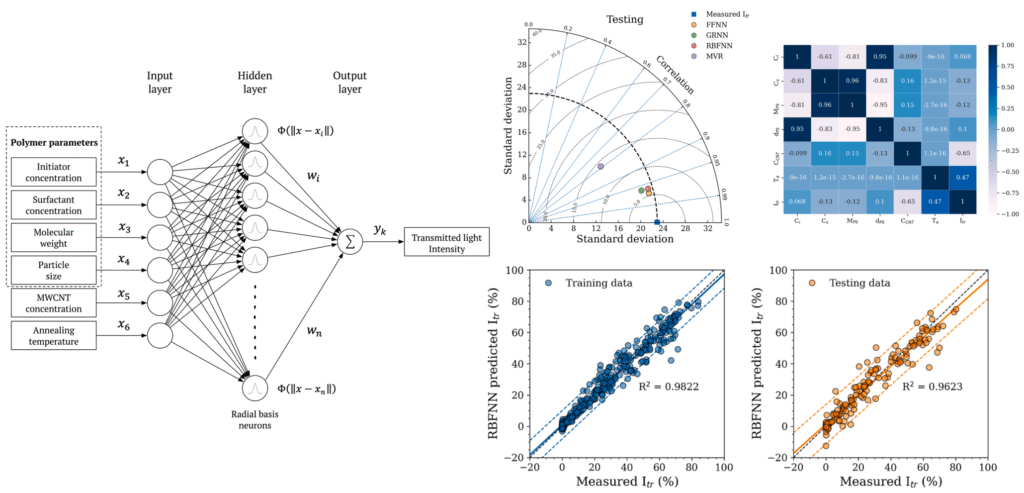Photophysics of fluorescent dyes and dye tagged biomolecules and their characterization
We investigate a diverse range of photophysical and chemical processes that help us understand how molecules behave in complex environments. One of our key interests is modeling the formation and dynamics of long-lived radical states via simulations, which are important in redox chemistry and biological signaling. We also investigate the detection of molecular oxygen and changes in local viscosity, using these properties as indicators of microenvironmental changes. Our work extends to the study of redox reactions and protonation kinetics, which play critical roles in biochemical transformations. We explore the folding and conformational transitions of macromolecules such as RNAs and proteins by tracking trans–cis isomerization kinetics. Additionally, we focus on the intrinsic photophysical properties of auto-fluorescent amino acids, proteins, and coenzymes, aiming to better understand their roles in cellular imaging and energy transfer processes. Together, these efforts help us build a molecular-level picture of dynamic systems in biology and soft matter.

Related publications:
1) S.C. Dirican, B. Demirbay, Microfluidic-based fluorescence spectroscopy design for revealing heavy atom effects on fluorophores of high triplet quantum yield: A numerical simulation study, Luminescence, 40(1), e70090, 2025.
2) S.C. Dirican, B. Tezcan, S.Y. Dölek, B. Demirbay, Mikroakışkan Temelli Floresans Mikroskop Sistemi ile Otofloresan Flavin Koenzimlerinin Fotofiziksel Geçişleri Üzerine Nümerik Modelleme Çalışmaları, International Journal of Advances in Engineering and Pure Sciences, 37(1), 2025, pp. 73-91. (In Turkish)
3) A. Kitamura, J. Tornmalm, B. Demirbay, J. Piguet, M. Kinjo, J. Widengren, Trans-cis isomerization kinetics of cyanine dyes reports on the folding states of exogeneous RNA G-quadruplexes in live cells, Nucleic Acids Research 2023, pp. 1-15, doi:10.1093/nar/gkac1255.
Film formation studies from polymer composites
Our research also extends into the soft matter domain, where we investigate the formation and structural evolution of polymer composite films. We study how nanoparticles or functional fillers are dispersed within polymer matrices and how these materials undergo film formation processes such as void closure and interdiffusion. Another particular focus is placed on understanding percolation behavior, which describes how conductive or mechanical pathways form within the composite as filler concentration increases. These studies help reveal how microscopic connectivity translates into macroscopic properties like electrical conductivity, mechanical strength, or optical transmittance performance. By combining experimental measurements with modeling approaches, we aim to design advanced polymer-based materials with tunable functionalities for applications in sensing, electronics, and coatings.

Related publications:
1) B. Demirbay, Film formation kinetics of polystyrene latex-based nanocomposites with multimodal particle size distribution, Polymer Engineering & Science, 2023, doi: 10.1002/pen.26533.
2) B. Demirbay, Ş. Uğur, Molecular weight effect of PS latex particles on optical and electrical percolations of PS latex/MWCNT nanocomposite films, Phase Transitions 94 (10), 2021, pp. 715-730.
Mathematical modeling studies via machine learning
We leverage cutting-edge machine learning algorithms to develop robust mathematical models that describe and predict the behavior of polymer composites. Previously focusing on transmitted light intensity and electrical conductivity properties, we investigated how these critical properties are influenced by composite composition, filler distribution, processing parameters, and microstructural factors. By integrating experimental datasets with data-driven modeling techniques such as neural networks and ensemble methods, we aim to capture the complex, nonlinear relationships inherent in these materials. This approach enables rapid and accurate predictions of material performance without relying solely on time-consuming physical experiments. Collaborating closely with our colleagues, we apply these models to optimize composite formulations and tailor their functional properties for applications in electronics, sensors, and optical devices. Our work not only advances the fundamental understanding of polymer composites but also contributes to the development of smart materials with enhanced electrical and optical characteristics.

Related publications:
1) B. Demirbay, D. Bayram Kara, Ş. Uğur, Multivariate regression (MVR) and different artificial neural network (ANN) models developed for optical transparency of conductive polymer nanocomposite films, Expert Systems with Applications 207, 2022, pp. 117937.
2) B. Demirbay, D. Bayram Kara, Ş. Uğur, A Bayesian regularized feed-forward neural network model for conductivity prediction of PS/MWCNT nanocomposite film coatings, Applied Soft Computing 96 (2020), pp. 106632.
3) B. Demirbay, D. Bayram Kara, Classification of opacity for polymer nanocomposite films via deep neural network (DNN) classifiers, International Conference on INnovations in Intelligent SysTems and Applications (INISTA), IEEE, 2022, pp. 1-6.